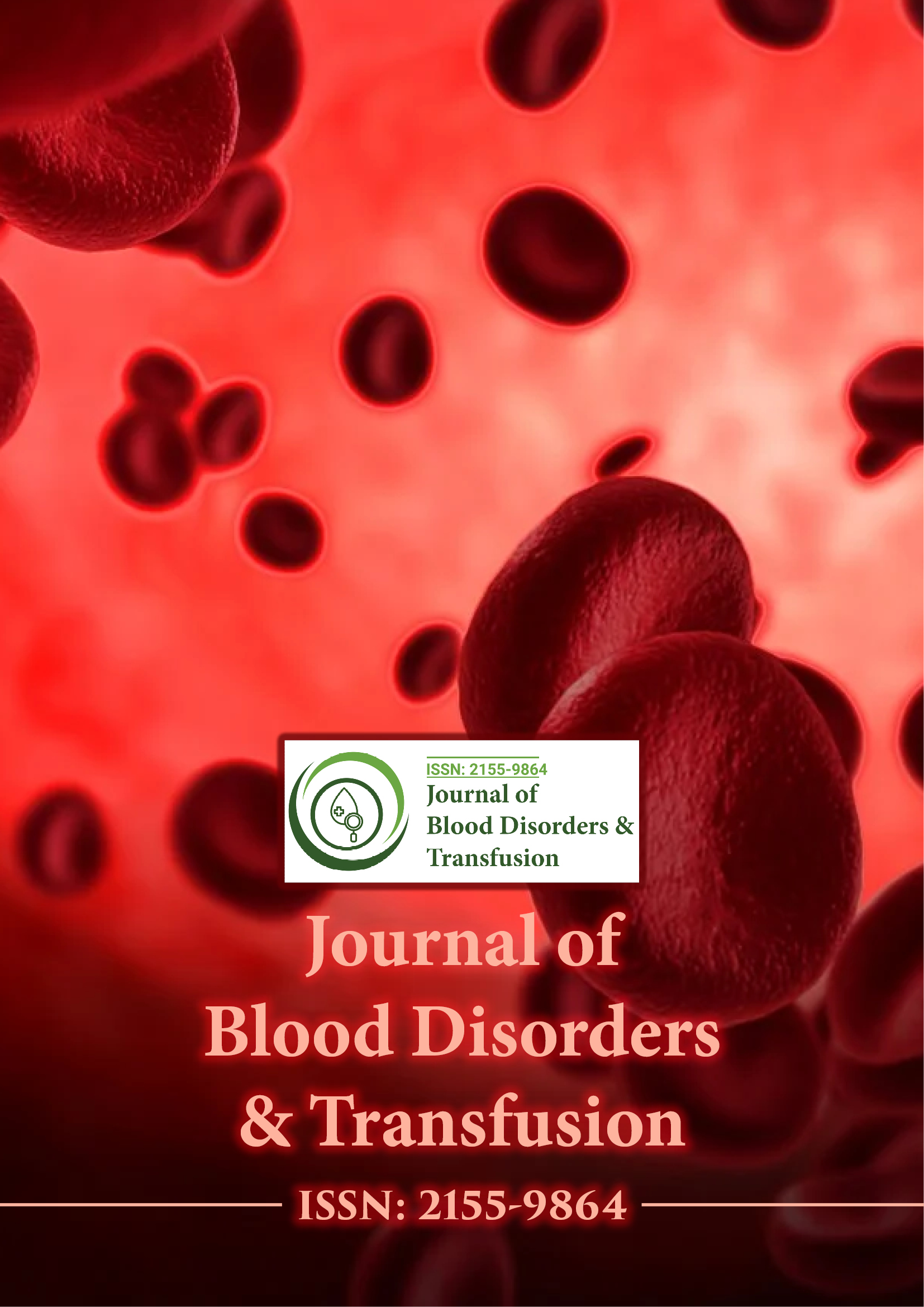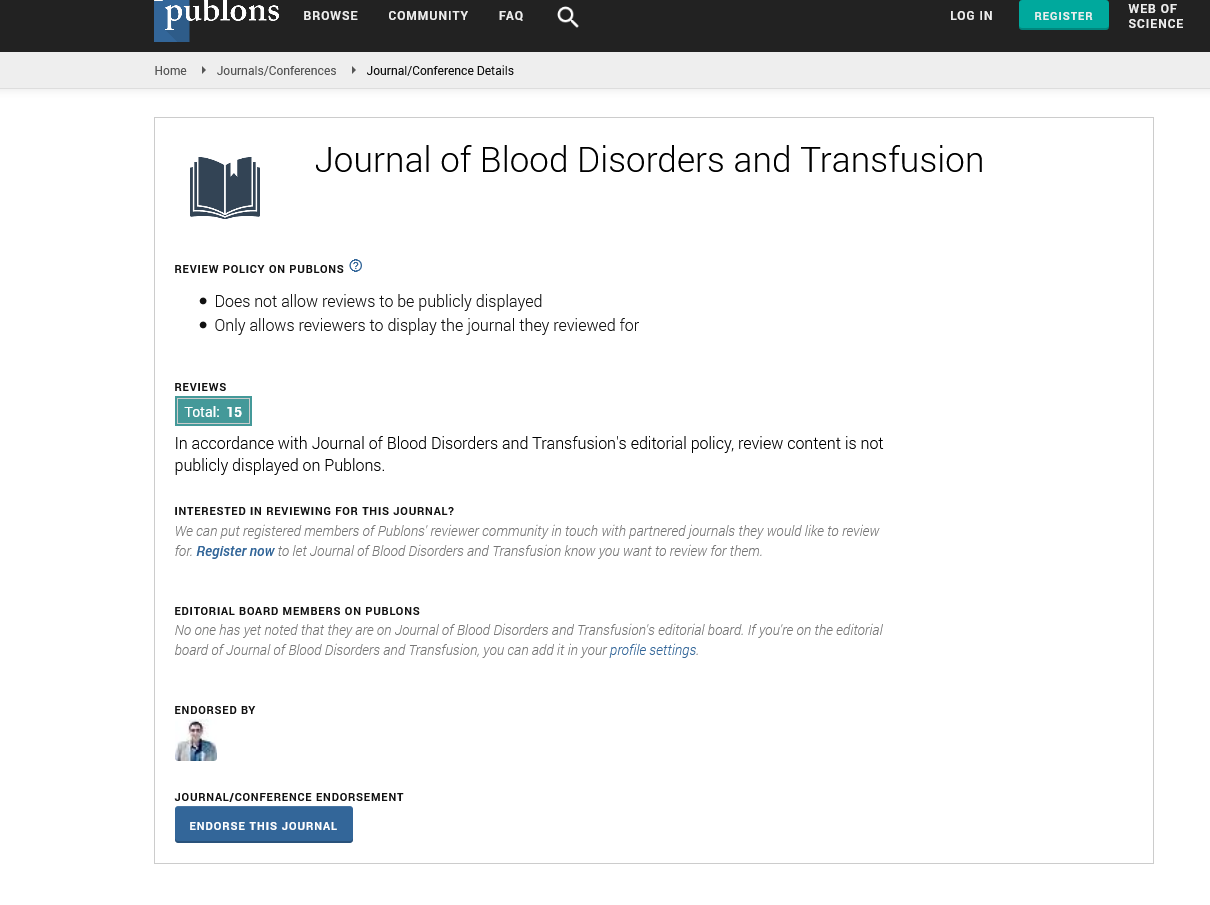Indexed In
- Open J Gate
- Genamics JournalSeek
- JournalTOCs
- Ulrich's Periodicals Directory
- RefSeek
- Hamdard University
- EBSCO A-Z
- OCLC- WorldCat
- Proquest Summons
- Publons
- Geneva Foundation for Medical Education and Research
- Euro Pub
- Google Scholar
Useful Links
Share This Page
Journal Flyer

Open Access Journals
- Agri and Aquaculture
- Biochemistry
- Bioinformatics & Systems Biology
- Business & Management
- Chemistry
- Clinical Sciences
- Engineering
- Food & Nutrition
- General Science
- Genetics & Molecular Biology
- Immunology & Microbiology
- Medical Sciences
- Neuroscience & Psychology
- Nursing & Health Care
- Pharmaceutical Sciences
Opinion - (2025) Volume 0, Issue 0
Role of Platelet Function Testing in Clinical and Surgical Settings
Kosmas Avgidou*Received: 26-May-2025, Manuscript No. JBDT-25-29781; Editor assigned: 28-May-2025, Pre QC No. JBDT-25-29781 (PQ); Reviewed: 11-Jun-2025, QC No. JBDT-25-29781; Revised: 18-Jun-2025, Manuscript No. JBDT-25-29781 (R); Published: 25-Jun-2025, DOI: 10.4172/2155-9864.25.S14.069
Description
Platelets play a central role in hemostasis and thrombosis. Accurate assessment of platelet function is essential in patients with bleeding disorders, on antiplatelet therapy, or undergoing surgical procedures. Conventional platelet counts do not provide information about platelet activity or dysfunction. Platelet function testing offers rapid evaluation of aggregation, adhesion and activation. This article reviews the methods, clinical applications, limitations and impact on patient outcomes of platelet function testing in various clinical and surgical scenarios.
Platelets contribute to primary hemostasis by forming the initial plug at sites of vascular injury and supporting secondary hemostasis through interaction with coagulation factors. Disorders of platelet function can result from congenital defects, acquired conditions, or pharmacological intervention. Assessment of platelet function is critical to prevent bleeding complications, optimize antiplatelet therapy and guide transfusion strategies in surgical settings. Advances in laboratory techniques and point-of-care testing have improved the ability to evaluate platelet activity in real time.
Methods of platelet function testing
Platelet function can be assessed using several laboratory and point-of-care techniques. Light Transmission Aggregometry (LTA) measures platelet aggregation in response to agonists, providing quantitative data on platelet responsiveness. Impedance aggregometry evaluates whole blood platelet aggregation under near-physiological conditions. The Platelet Function Analyzer (PFA) simulates high shear stress and measures closure time, reflecting platelet adhesion and aggregation. Flow cytometry assesses platelet surface markers and activation states. Each method provides unique insights into platelet function and can be selected according to clinical requirements.
Platelet function testing in antiplatelet therapy
Patients receiving antiplatelet agents, such as aspirin, require monitoring to ensure effective inhibition while avoiding excessive bleeding. Platelet function testing can detect suboptimal response or resistance to therapy. Aggregometry and point-of-care assays provide rapid assessment of drug effect, allowing clinicians to adjust dosage or switch agents. Monitoring is particularly important in patients undergoing percutaneous coronary interventions or those with high thrombotic risk, where balancing platelet inhibition and bleeding risk is essential.
Perioperative assessment of platelet function
Surgical procedures, particularly cardiac, liver and major orthopedic surgeries, pose significant challenges to hemostasis. Platelet dysfunction, whether pre-existing or induced by medications or cardiopulmonary bypass, increases the risk of perioperative bleeding. Preoperative platelet function testing allows identification of at-risk patients and guides transfusion of platelets or other hemostatic agents. Intraoperative monitoring using point-of-care devices provides real-time information, supporting targeted interventions and reducing unnecessary transfusions.
Trauma and critical care applications
Trauma patients often present with complex coagulopathy involving platelet dysfunction, consumption and dilution. Rapid evaluation of platelet function aids in identifying patients requiring platelet transfusion or hemostatic therapy. Point-of-care platelet assays, integrated with viscoelastic testing, facilitate immediate clinical decision-making in emergency settings. Critical care patients with sepsis, organ failure, or anticoagulant therapy may also exhibit altered platelet activity and testing informs therapeutic adjustments to reduce bleeding and thrombotic complications.
Point-of-care platelet function testing
Point-of-care devices offer rapid evaluation of platelet function at the bedside or in surgical suites. Impedance aggregometry and the PFA system provide results within minutes, enabling immediate clinical intervention. These devices are particularly useful during high-risk surgeries, in trauma care and for monitoring antiplatelet therapy. Integration of point-of-care testing into clinical protocols supports efficient management, reduces delays and may improve patient outcomes.
Clinical impact on patient outcomes
Accurate platelet function assessment informs therapeutic strategies, reducing the incidence of bleeding and thrombotic complications. In surgical settings, platelet testing supports targeted transfusion therapy, minimizing unnecessary use of blood products. In cardiovascular interventions, monitoring antiplatelet therapy improves efficacy and safety. Trauma and critical care applications demonstrate that early identification of platelet dysfunction can improve survival and reduce intensive care stay. Overall, platelet function testing enhances individualized patient management.
Platelet function testing is a vital component of modern hemostatic assessment in clinical and surgical settings. Laboratory-based and point-of-care methods provide detailed information on aggregation, adhesion and activation. Monitoring platelet function in patients on antiplatelet therapy, undergoing surgery, or experiencing trauma informs clinical decisions, reduces complications and improves outcomes. Ongoing technological advancements and integration into clinical workflows are enhancing the precision and utility of platelet function testing in diverse patient populations.
Citation: Avgidou K (2025). Role of Platelet Function Testing in Clinical and Surgical Settings. J Blood Disord Transfus. S14:069.
Copyright: © 2025 Avgidou K. This is an open-access article distributed under the terms of the Creative Commons Attribution License, which permits unrestricted use, distribution, and reproduction in any medium, provided the original author and source are credited.

